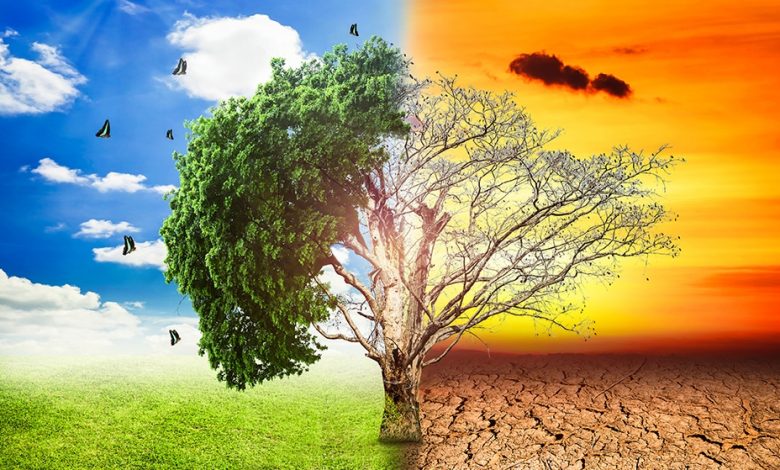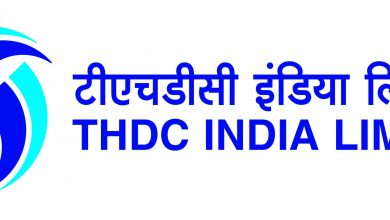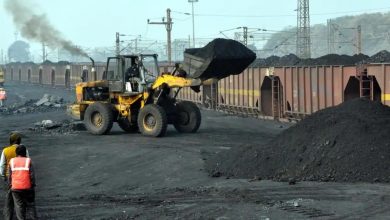India’s Monsoon Patterns Are Changing Due To Climate Change : Experts

Indian Monsoon is a complex phenomenon and reportedly climate change and global warming has further accentuated the situation, with each year surpassing the earlier records.
The precipitation across the country is driven by the Indian Monsoon as over 70% of the annual rainfall is realized during this four-month long season. India records 881 mm of rainfall during the Monsoon season spanning from June to September. July and August are the wettest months, receiving 2/3rd of the season’s rainfall. The Southwest Monsoon is very critical for the agriculture sector as it accounts for about 14 percent of India’s GDP.
According to India Meteorological Department (IMD), India’s annual temperature departure of +0.29°C (+0.52°F) in 2020 was the eighth highest since national records began in 1901. India’s warmest year took place in 2016 with a temperature departure of +0.71°C (+1.28°F). Twelve of India’s 15 warmest years have occurred since 2006.
The global temperature profile has been showing a rising trend. It is estimated that, by 2050, we can anticipate an overall rise by 1.5°C or more in a business-as-usual scenario. According to meteorologists, the combination of Climate Change, Global Warming and perpetual El Niño has created unusually warm weather conditions in India since records began in the year 1950.
NASA’s Goddard Institute for Space Studies says that 2020 was the hottest year on record tying with 2016 (which held the previous record for the hottest year).
GP Sharma, ex-AVM Meteorology, Indian Air Force and President-Meteorology and Climate Change at Skymet Weather said, “Since Monsoon is a global feature and is largely driven by oceanic temperatures, the arrival, withdrawal and sustenance of Monsoon are mainly directed by the ocean heat content. The Indian subcontinent has often been described as a ‘hotspot’ which generally bears a huge impact on account of any significant variation in land- atmospheric interaction.”
The rising global temperatures have resulted in the increase in oceanic temperatures, which has largely affected the pattern of Indian Monsoon. Oceans were exceptionally warm in 2020 as annual global sea-surface temperature was the third highest on record at 1.37°F (0.76°C) above the 20th-century average — only 2016 and 2019 were warmer. Record-high sea surface temperatures were observed across parts of the Atlantic, Indian and Pacific oceans.
Exceptionally warm ocean temperatures have doubled the frequency of extreme weather events in the last few years, be it in terms of excess rains, heat, drought or floods. “All these high impact events have resulted in the enormous variability of Monsoon rains both in terms of time and space. Earlier the average drought was 1 in every 15 years, but the last one decade has itself witnessed three droughts.
El Niño and La Niña
The much talked about ocean-atmospheric phenomenon El Niño and La Niña are also on the rise. While El Niño has an inverse relationship with the Indian Monsoon precipitation, La Niña is linked with good Monsoon showers. For instance, India had witnessed severe drought in 2014 and 2015 on the pretext of El Niño, while 2020 saw above normal Monsoon rains due to prevailing La Niña conditions.
Though weather experts do not see El Niño as directly an offshoot of global warming, warming of oceans on account of the latter is increasing the intensity, frequency and duration of El Niño events. El Niño is abnormal warming of the equatorial Pacific Ocean and its frequency is once in 2 to 7 years. “Remarkably, the incidents of El Niño and La Niña have increased, which have a direct impact on the Monsoon. The worst part about both these phenomena is that their earliest indication arrives very late. One remains indecisive till the fag end as reaction time is not very large. The El Niño- Southern Oscillation (ENSO) and equatorial Indian Ocean climate anomalies are the main factors that influence the inter-annual variability of the Indian summer Monsoon. Also, with the rising number of El Niño and climate change, droughts will only enhance the uncertainties related to agriculture and rural livelihoods
Decrease in Monsoon rainfall
Factors like frequency of El Niño, weakening monsoonal circulation, increased air pollution, and warming of the Indian Ocean are impacting the rainfall duration. According to a report, Proportional Trends of Continuous Rainfall in Indian Summer Monsoon, The rainfall trend from 1951 to 2018 displays a declining trend for the first 45 days (1 June to 15 July) from the onset of monsoon. The total number of rainy days in rice crop season (i.e., first 45 days, crop season, from the onset of monsoon) is decreased by half days during Late-period than Early-period over India.
Monsoon rainfall has also been swinging towards below normal. Last three decades have also seen a gradual drop in the quantum of precipitation during Monsoon. Rainfall statistics from 2011-2017 had indicated that this decade may also follow the same pattern. But 2019 and 2020 have been the savior to an extent.
Decades Rainfall in mm (JJAS)
1981-1990 881
1991-2000 877
2001-2010 847
2011-2020 860
Erratic rainfall distribution
The Monsoon rainfall variability across different regions in the country directly impacts the growth of rain-fed crops and socio-economic structure. It has been noticed that the distribution of rainfall during Monsoon has now gone for a toss. The erratic behavior of Monsoon and its vagaries cannot be taken lightly.
Dr Roxy Mathew Koll, a climate scientist at the Indian Institute of Tropical Meteorology, Pune said, “There has been an increase in extreme rainfall events while a decrease in annual rainfall over Central India from 1950 to 2015. The increase in moisture supply from the Arabian Sea is the prime reason for an increase in extreme rainfall events over Central India. The reduction in annual rainfall is attributed to the weakening of monsoon circulation and decreasing low-pressure systems over the Indian region.”
According to a report, Proportional Trends of Continuous Rainfall in Indian Summer Monsoon, the number of rainfall days from 1985 to 2018 shows a decline during July over all regions of India. Overall, the number of rainfall days exhibits a decreasing trend in the summer season and months except for June over India. Central India and Northeast India exhibit a decreasing trend in the number of rainy days for the summer season. August also experienced a reduced number of rainy days over all regions, except for the Southeast. The number of rainy days decreased over the Northeast and increased over the West Coast in the late period.
Dr. Seema Javed is an Environmentalist, Independent Journalist & Strategic Communicator for Climate Change




